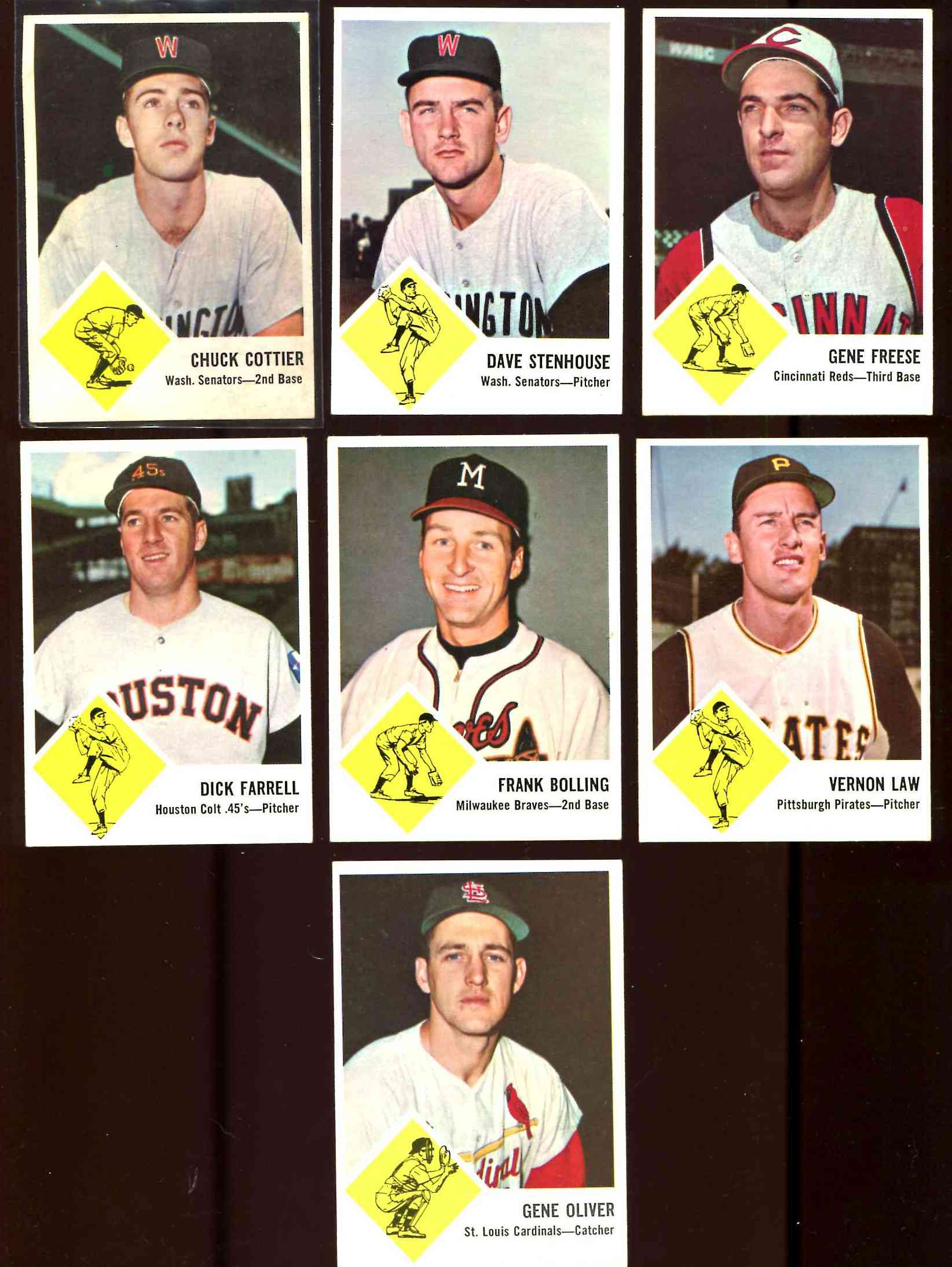1963 Fleer #62 Gene Oliver (Cardinals)


Please wander around the website for more info, prices, values & images
on vintage baseball, football, basketball, hockey, sport and non-sports cards.
1980 O-Pee-Chee (OPC) Baseball |

1952 Wheaties ChampionsIn 1952 Wheaties issued this set of cards on the back of their boxes. The 2" x 2-3/4" cards needed to be hand cut from the back of the boxes making high quality samples almost impossible to find. The set featured 30 different champions from a variety of sports in both "Portrait" and "In-Action" poses for a total of 60 different cards. 10 of the 30 athletes are baseball players with football, basketball, golf, bowling, diving and other sports also included.Top players in the set are Ted Williams, Stan Musial, George Mikan, Ben Hogan and Otto Graham. |

1985 Leaf BaseballIn 1985 Donruss created a special version of its baseball cards (1985 Leaf) in an attempt to enter the Canadian baseball card market. Except for the addition of a colorful green leaf, the card fronts were virtually identical to Donruss cards. The most interesting difference occurred on the back where the Leaf cards featured text in both French and English !At only 264 cards, the Leaf set was much smaller than Donruss with it's 660 cards. But ... because of it's smaller set size the Leaf set has a much higher percentage of star cards. There was also a special two-card "Canadian Greats" subset with paintings of Dave Stieb and Tim Raines. Top rookies are: Roger Clemens, Kirby Puckett, Orel Hershiser, Dwight Gooden and Mark Langston. |

Starting approximately in 1886, sportscards, mostly baseball cards, were often included with tobacco products, for promotional purposes and also because the card reinforced the packaging and protected cigarettes from damage. These sports cards are referred to as tobacco cards in the baseball card hobby. Over the next few years many different companies produced baseball cards. Tobacco cards soon started to disappear as the American Tobacco Company tried to develop a monopoly by buying out other companies.
They were reintroduced in the 1900s, as American Tobacco came under pressure from antitrust action and Turkish competition. The most famous and most expensive, baseball card is the rare T206 Honus Wagner. The card exists in very limited quantities compared to others of its type because Wagner forced the card to be removed from printing. It is widely (and incorrectly) believed that Wagner did so because he refused to promote tobacco, but the true explanation lies in a dispute over compensation.
Soon other companies also began producing baseball and football cards. Sports magazines such as The Sporting News were early entries to the market. Candy manufacturers soon joined the fray and reflected a shift toward a younger target audience for cards. Caramel companies were particularly active and baseball cards were one of the first prizes to be included in Cracker Jacks. World War I soon suppressed baseball card production.
